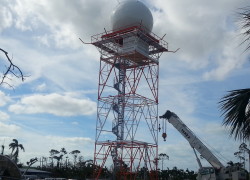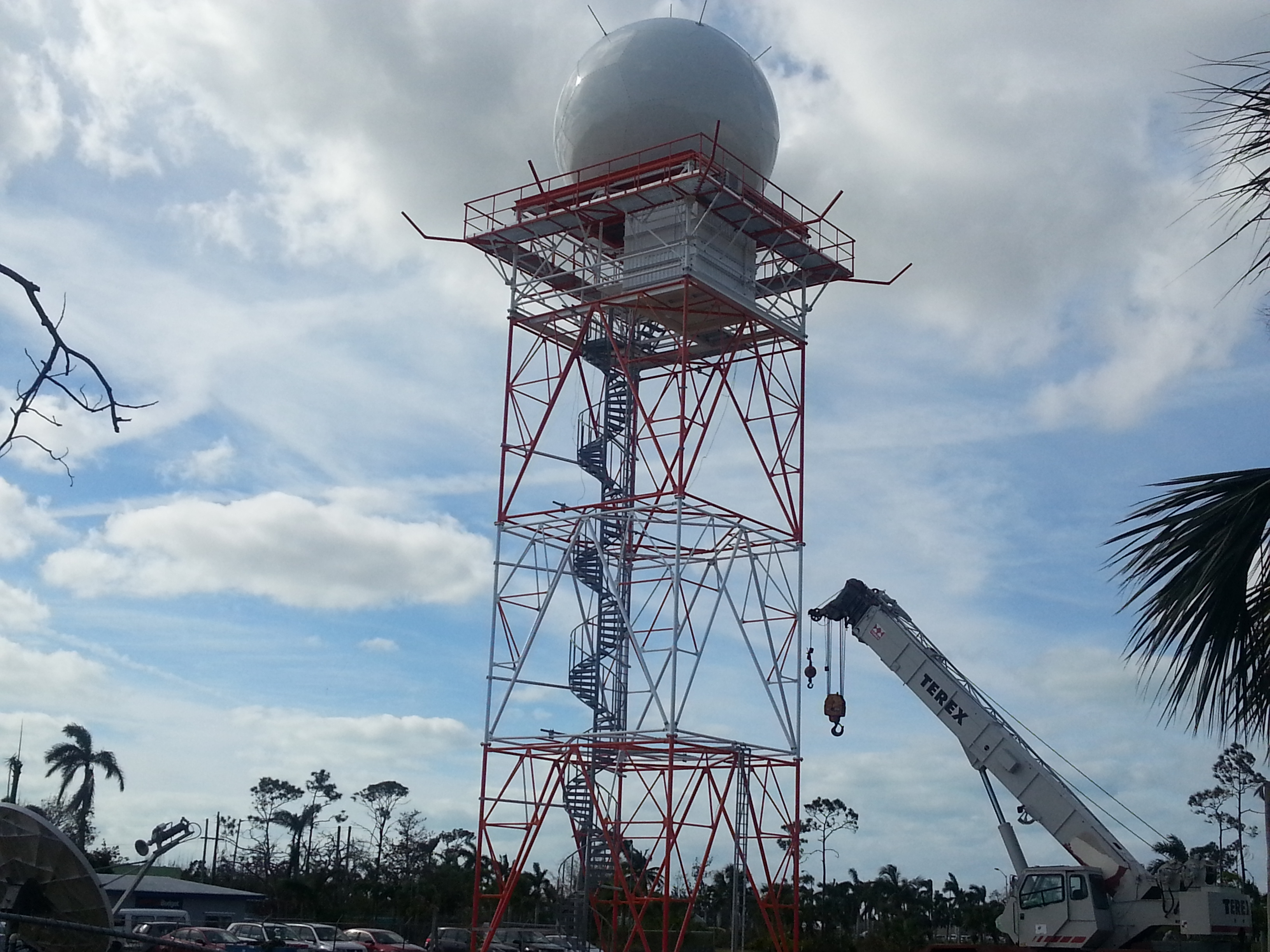
 The government has invested over $20 million into The Department of Meteorology it gets set to install four new Doppler Radars on different islands in The Bahamas.
The government has invested over $20 million into The Department of Meteorology it gets set to install four new Doppler Radars on different islands in The Bahamas.
The new radars will be installed over a two-year span on Family Islands such as Marsh Harbour, Abaco; Deadman’s Cay, Long Island and Mayaguana.
The first one of the four new radars was revealed yesterday as Minister of Transport and Aviation, Glenys Hanna-Martin, and some staff of the Department of Meteorology of Weather Station at the Lynden Pindling International Airport (LPIA) conducted a walk about at the Weather Station site.
Noting the need for this technological advancement because of climate change, Mrs. Hanna-Martin also noted the significance of installing the new radars.
“Today we are very pleased to see the progress of a project that’s very important, critical to the life of our people.
“It’s a major investment, the government had to think very hard about it, more than approximately $20 million plus, but it is one based on our experience, based on our vulnerabilities based on the risk factors that is deemed to be absolutely critical for the well-being of our people,” Mrs. Hanna-Martin said.
Mrs. Hanna-Martin further noted that because of The Bahamas’ location and the size of the islands, a network or a system is needed to prepare for natural disasters.
Referring to the last two powerfully devastating hurricanes, Mrs. Hanna-Martin noted that having the equipment to see and predict storms will be done through a networking of radars.
“The Bahamas is archipelagic, it is low lying, we are a small island developing state; there is climate change and we have seen that in the last year alone; as of last October, two major hurricanes which wreak tremendous havoc on the Commonwealth of The Bahamas.
“The first one Joaquin, hit an area of The Bahamas which is more to the south of New Providence and not within the range of the Doppler and so the Met Department had to rely on other tools to predict weather patterns.
“What we are doing now is creating a network throughout the archipelago, each Doppler will connect to the other Doppler thereby providing continuous coverage to the chain of islands.
“The old Doppler, which was purchased in 2004 at a price of $1 million , which during its time was major technology for The Bahamas is now dated, it is old technology and in fact when you compare it now to the one we are now installing it is dual polarization it is much more sensitive in its depiction of weather patterns, unlike the one we currently have.
“Even for New Providence now on the range of this particular new radar it will provide The Bahamas with coverage and a degree of coverage that is unprecedented. This will happen throughout the country,” Mrs. Hanna-Martin stated.
Also, speaking to the size of The Bahamas, Lester Atkinson, radar expert with the company Vaisala, contracted to install the radars, also noted the extensive technology of the C-Band radar and gave his take as to why four radars are needed.
“I’ve worked in the radar industry for 30 years. We have these radars all over the world. This is a WRM 200 radar it is dual polarized which means that it can actually do a better job with the particle identification than your old S-Band radar that was just a single polarized radar.
“So this technology is the newest technology we have right now. The reason that you need four radars is because like any radar they can only look out so far, they have a limited range.
“People think the radars can see things forever, that’s not true. So, the reason you’re getting four radars scattered around the islands is they can overlap each other and do what we call a composite, a very normal thing to do,” Mr. Atkinson said.
As to the life span of the radar, Mr. Atkinson could not give an exact figure but noted that the radars are durable.
“There are things that can wear out, this is a magnetron system that has a limited life span, but we design this radar, the gear trains, the drive motors everything involved in it mechanically is extremely durable,” Mr. Atkinson stated.
In addition to the new radar systems, Mrs. Hanna-Martin also noted that training to work the new equipment and system with regards to bringing forth the weather accurately is something that is also being under-taken by the Meteorology Department.
“Additionally, we are training Bahamians in the repair and maintenance of the radars so this is building capacity in technology. This is part of a bigger effort or thrust for the Met Department to build capacity in a way that is totally unprecedented.
“We’ve hired individuals who are being trained as observers and forecasters so we are now building capacity in that way.
“So, the Met Department is really going through a new level in The Bahamas, unprecedented, this is a very important day in The Bahamas, in terms of our capacity as a people, in terms of our ability to be able to predict, to protect, to forewarn, this has armed our people in a way that has never, ever been seen and perhaps not anticipated,” Mrs. Hanna-Martin said.
The old radar system will be refurbished and installed on Ragged Island.
The installation of the new radar system at LPIA should be commissioned by the second week in April.


